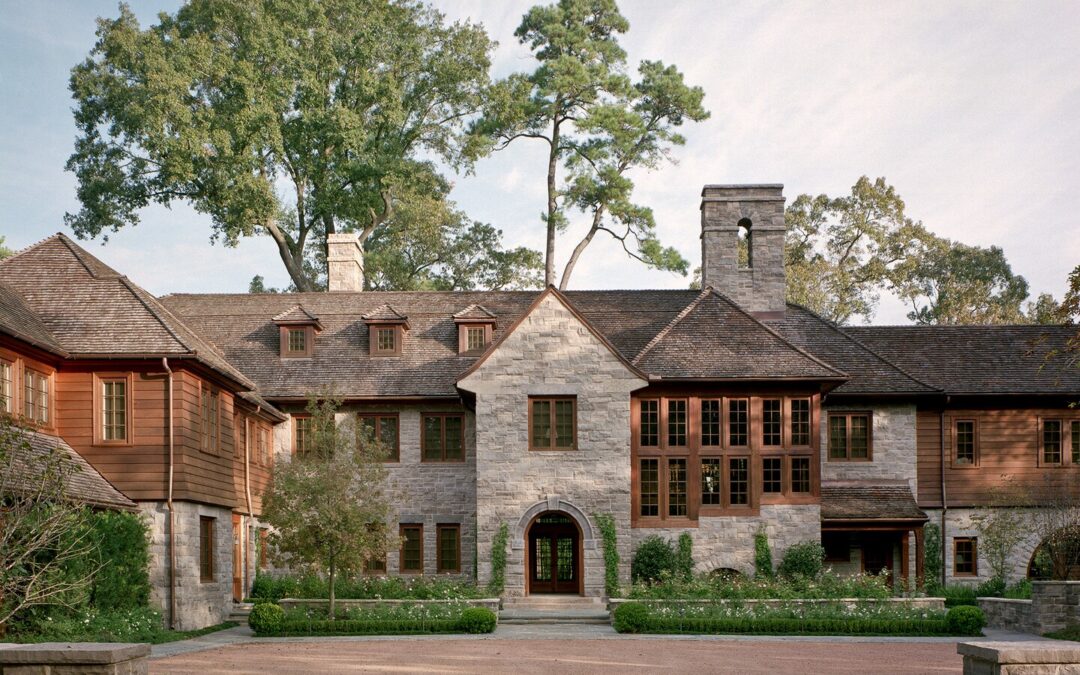Architects’ work is found all over the city, especially River Oaks.
Article by Diane Cowen
Originally published in River Oaks Lifestyle
When Bill Curtis and Russell Windham each moved to Houston in the early 1990s, the oil bust and recession of the 1980s was mostly in the rear view mirror and a large home commissioned by a wealthy Houston businessman had signaled to others that it was time to spend money again.
Bill was a native of Longview and graduate of the University of Texas who had worked in San Antonio and Washington D.C., and Russell grew up in the Texas Panhandle and earned his degree at Texas Tech before working in New Haven, Conn., and London. A mutual friend recognized that both preferred to work in the classical tradition and thought their working styles would mesh, so he introduced them.
“We got to Houston when the economy was just starting to go again,” Russell said. “We got to know what John Staub had done and understood its roots … since both of us had a deep background in traditional, sympathetic architecture. When we work in River Oaks, we want to blend in, not make a giant statement.”
The two men formed Curtis & Windham Architects in 1992, and while they’ve done work all over the city, a good deal of their Houston work can be found in River Oaks, multi-million-dollar homes that often run 8,000 square feet to 15,000 square feet. Then there are the vacation homes they’ve created, in locales such as Colorado, Wyoming, New Mexico and the Bahamas.
The firm began with just Bill and Russell, but today it has a staff of 35. In December they were inducted as the newest honorees in the Houston Design District’s Leaders In Design program.
“We had the pleasure of seeing River Oaks the way it was supposed to be and it taught us the discipline of working on different sites …,” Bill said. “The River Oaks experience, and it continues to be that way, gave us the rudder to solve all kinds of problems.”
When designing a new home, both men look for classical architectural precedent for details on the interior and exterior. That means sticking to what’s already been done in a traditional way although often in interesting combinations and luxurious materials.
For example, when Bill visited France, he noticed tent-shaped guard houses at the Palace of Versailles. He and Russell have used them as a guide for striped buildings in a similar shape in clients’ gardens and entertaining spaces.
“In architectural speak, we call them ‘follies,’” said Russell. “We’ve done lots of them in gardens as a complement to the house.”
In 2018, Bill and Russell produced a monograph of their work, “A Vision of Place,” published by the Texas A&M University Press.
They’re finishing up their as-yet unnamed second book now, an extension of the first book that is expected to publish in the fall of 2025 by Rizzoli.
“There’s more eclecticism in our work, more than the French house on the cover (of the first book),” Bill said. “Our work varies in scale, expression and locale.”
The new book will be a showcase for their architecture, but also will feature interiors from collaborations with renowned interior designers such as Charlotte Moss, Ann Wolf, Suzanne Kasler and Miles Redd, who wrote a foreword for the book.
“We understood what architect John Staub had done and understood its roots.” – Architect Russell Windham




